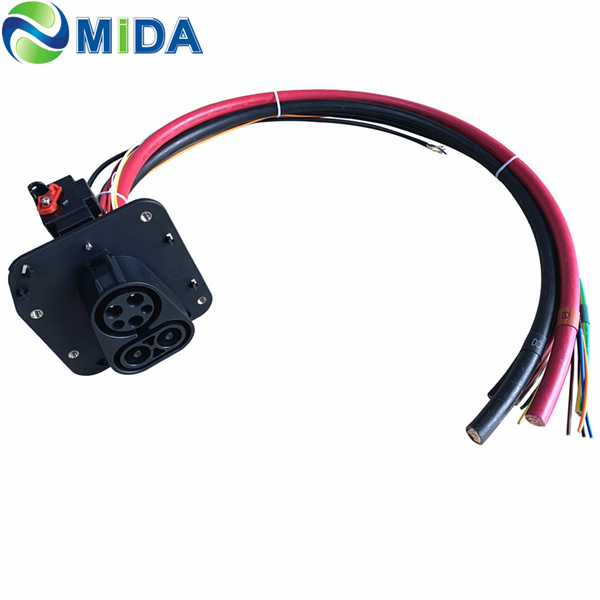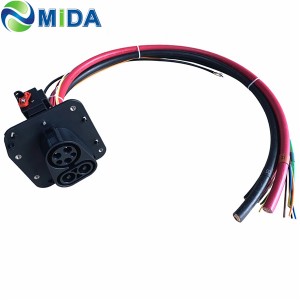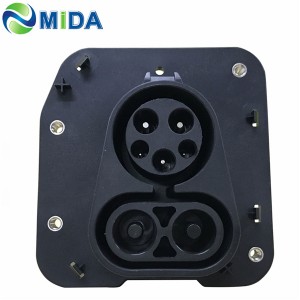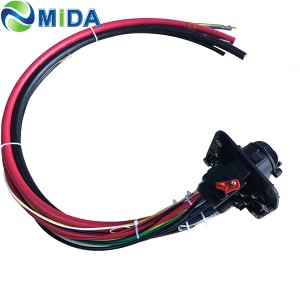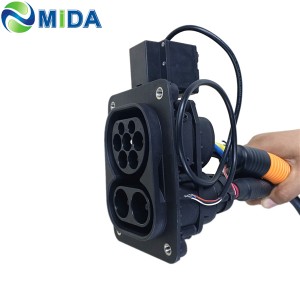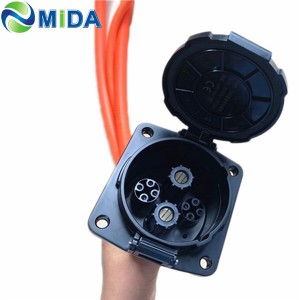CCS 62196-3 Inlets 200A 350A Type 1 Socket DC Fast Charging China Factory
| Features | 1. Meet 62196-3 IEC 2014 SHEET 3-IIIB standard | ||||||||
| 2. Concise appearance, support back installation | |||||||||
| 3. Back Protection class IP65 | |||||||||
| 4. DC Max charging power: 90kW | |||||||||
| 5. AC Max charging power:41.5kW | |||||||||
| Mechanical properties | 1. Mechanical life : no-load plug in/pull out>10000 times | ||||||||
| 2. Impat of external force:can afford 1m drop amd 2t vehicle run over pressure | |||||||||
| Electrical Performance | 1. DC input: 150A 1000V DC MAX | ||||||||
| 2. AC input: 63A 240/415V AC MAX | |||||||||
| 3. Insulation resistance:>2000MΩ(DC1000V) | |||||||||
| 4. Terminal temperature rise:<50K | |||||||||
| 5. Withstand Voltage:3200V | |||||||||
| 6. Contact resistance: 0.5mΩ Max | |||||||||
| Applied Materials | 1. Case Material: Thermoplastic,flame retardant grade UL94 V-0 | ||||||||
| 2. Pin:Copper alloy,silver + thermoplastic on the top | |||||||||
| Environmental performance | 1. Operating temperature: -30°C~+50°C | ||||||||
| Model selection and the standard wiring | |||||||||
| Model | Rated current | Cable specigication | Cable Color | ||||||
| DSIEC3J-EV150S | 150Amp | 2 X 50mm²+1 X 6mm² +6 X 0.75mm² | Orange or Black | ||||||
One charging inlet for all vehicle types and charging types
From forklifts to dump trucks, the CCS charging inlets can be used universally
The demand for fast charging is growing constantly. The requirement on the latest e-car generations in particular is increasingly on them being able to be charged in the shortest amount of time and with the most stringent safety standards.
The same applies to electric utility vehicles such as buses, transporters, forklift trucks, tractors, construction machines, mining vehicles, cleaning and disposal vehicles, emergency vehicles, tow trucks, and much more.
Our vehicle inlets are the universally suited charging interface for all vehicle types. They are the vehicle-side counterpart to the AC or DC charging connector. With the Combined Charging System (CCS), which we played a major part in co-developing, a vehicle can be charged with direct current (DC) or with alternating current (AC) using the same CCS charging inlet.

